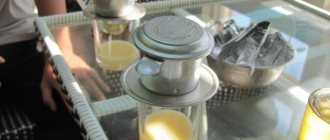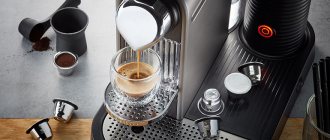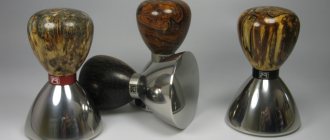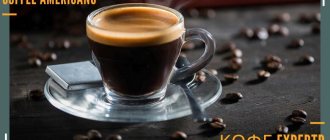Coffee has long become not just a drink, but a reason for informal communication. Organizers of various seminars, conferences, trainings, as well as corporate meetings and brainstorming sessions took full advantage of this. They proposed breaking up events with short breaks, called coffee breaks. Gradually, certain rules, traditions and style of such breaks were formed. What is a coffee break, what should be the correct organization of a coffee break and what is the traditional menu for it?
Coffee break: purpose and menu features
In the modern business world, maintaining effective partnerships is impossible without the practice of collective discussion of surveys. Meetings must be organized and conducted according to certain rules. This will allow a meeting of any format to be held with maximum efficiency, benefit for the participants, and according to the agreed time frame. Effective coffee breaks allow you to successfully solve a business problem or find a group solution to a problem thanks to the well-thought-out organization of the meeting. During the break, participants will be able to relax in an informal atmosphere, establish and strengthen business relationships.
Historical excursion
Coffee break: what does it mean? This is the name for a short break lasting 10–40 minutes, which is spent during a business meeting, business conference for a snack, free communication (the terms coffee time, coffee break are also used). The concept comes from the English coffee break. Most often, cream, containers with boiling water, and sweets (sweets, cookies) are placed on the table. Less commonly, the list is supplemented with alcoholic drinks and hot snacks.
Supposedly, the first coffee break was held in 1936 in America. Back then, such events were organized to popularize the product and manufacturers. Since then, this format has become very popular in the business environment, and later – one of the most popular forms of corporate leisure. There are reports of similar interruptions during meetings held by the wives of Norwegian immigrants in Stoughton, Wisconsin, where the city has celebrated an annual festival since 1880. American behavioral psychologist John B. Watson played a significant role in promoting the aromatic drink and the concept of the coffee break.
History of appearance
Coffee was introduced to Europe about 500 years ago. During World War II, its sales fell sharply. In the middle of the last century, the bureaus, which included companies from Canada, the USA and many other coffee exporting countries, carried out a number of different promotions aimed at increasing the consumption of coffee products.
To do this, we decided to organize an event, setting aside a pause for a break between work. During it, all those present were treated to a cup of coffee and pastries.
This action was a great success, and many businessmen decided to adopt this idea. Entrepreneurs noticed that after 1–1.5 hours the participants’ productivity during negotiations decreased and their reactions worsened.
A break with a cup of aromatic coffee and a light snack helped restore energy and strength and made communication productive. As a result, the coffee break became widespread.
Rules
A coffee break is an invariable attribute of a well-prepared event; it directly indicates the level of its implementation. The experienced team of the “Russian Traditions” chain of cafes and banquet halls in Moscow and St. Petersburg will help you organize a break during a corporate meeting at a professional level, select the optimal menu within the available budget, and present the dishes beautifully. The purpose of organizing a coffee break is to give the event participants the opportunity to relax, discuss the information they heard, and share their impressions. A short break mobilizes the listener’s attention, pushes him to take a fresh look at things and make the right decision.
Buffet and coffee break are similar, but not the same concepts. They differ in their motives and menu specifics. According to the format, participants are not assigned specific seats; they pour their own drinks and eat while standing. The duration depends on the format and duration of the meeting. As a rule, there are 2–4 coffee breaks per event, approximately every 2–3 hours. It is customary to organize it during the daytime, according to the agreed regulations. The menu should include light snacks and sweets - they are convenient to eat. Hearty, high-calorie dishes that are consumed using cutlery are not served. When preparing and compiling the menu, it is important to take into account the religion of the participants, health characteristics, and season. The higher the status of the participants, the more refined the service and the higher the level of food and drinks.
There are several types of coffee breaks:
- philosophical - consists of a seminar, a short break, including food, delicious drinks, discussion of philosophical issues is acceptable;
- buffet cocktail - a break occurs after a training, conference, tea, coffee, light snacks are offered;
- outdoor tea party - it can be held outdoors, but usually a banquet hall with the necessary equipment is chosen.
To prepare large-scale corporate events and negotiations, catering services are in demand, provided by catering restaurants. They include not only preparation and delivery of goodies, but also serving, table decoration, serving guests, and cleaning at the end of the meeting. The difficulty of running a coffee break flawlessly lies in its short duration, limited range of dishes and at the same time the need to satisfy the expectations of the participants.
Organizing a coffee break
How to organize the perfect coffee break? There is nothing complicated about this if you follow a certain algorithm. Four reference points of any coffee break:
- Place,
- Menu: drinks and snacks,
- Utensils and equipment,
- Service.
Each item on this list requires attention. Advice from a professional catering company will help you organize a coffee break of any level.
- First you should choose a place where the table will be set during the break. If the group of people is small, then you can allocate space in the same room where the main event takes place. If the group is more than 15 people, it is advisable to find an additional room for a coffee break.
- Drinks are an important part of a coffee break. As a rule, the first level of organization involves instant coffee and tea bags, water and packaged juice to quench your thirst. However, you can rent special thermoses in which drinks are served in hotel restaurants. Then guests will be able to receive natural coffee and well-brewed tea.
- If you decide to treat guests to coffee from the office coffee maker, then appoint a person in charge who will help guests cope with the preparation of the drink. After all, they may not know how to use this model and your break will drag on for a long time.
- There is a difference in organizing a coffee break for compatriots and foreign guests. For foreign delegations, the issue of hygiene always comes first, so individual packaging is needed for everything. Sugar, cream, milk, candies, cookies, cutlery, dishes and napkins - all this is best offered for single use in packaged form.
- Our compatriots perceive disposable tableware as evidence of a “cheap” approach. Therefore, for a coffee break, where the presence of respectable people is expected, cups for tea and coffee, glasses for water and common dishes for serving snacks should be made of glass or porcelain. Textile decoration of tables is desirable - tablecloths and napkins are welcome. This will be evidence of a high organizational level.
- A coffee break does not involve entertainment, only communication, so there is no need for music or a running TV.
- You can organize a coffee break on your own, but if you are holding a conference or seminar with a large number of guests, be sure to provide two or three assistants. They will help guests find their way, tell them where to get tea or coffee, where to wash their hands, or how to return to the meeting room later.
A few years ago, most large organizations preferred to use the services of catering companies, but today coffee breaks are more often held in-house. An exception is events at the international or representative level. The help of professionals is invaluable.
Menu types
Correctly selected dishes will help to successfully implement the functions of a coffee break, satisfy the feeling of hunger, ensure a comfortable state of guests and a favorable emotional background. Several menu options have been developed, which are chosen based on the scale, specifics of the event, the number of participants, and the special needs of some of them (additional fructose is included for diabetics, freshly squeezed juices for vegetarians).
| Coffee break menu options | Peculiarities |
| Base | Includes a basic set of snacks - baked goods (muffins, cookies), less often small sandwiches, sandwiches. The drinks most often chosen are bagged tea and coffee granules, supplemented with sugar, milk, and lemon. |
| Economy | The menu consists of a budget set of dishes. Customers can order canapes with herring, tapas on crispy toast with smoked ham, sausage, bruschetta with cheese, croissants with tuna, salads in tartlets. The top places are occupied by meat, fish, vegetable, cheese tiny sandwiches, small sandwiches (bruschetta or croissants). Plate salads are popular - with baked chicken breast and fried champignons. The list of drinks is complemented by juice and dessert - chocolates. |
| Traditional | Often includes products such as a chicken sandwich on a lettuce leaf, meat canapés, and cheese wedges on a skewer. For dessert - sweets, puff pastry bagel. |
| Premium | This type of menu contains the maximum number of items, which allows the guest to choose the most delicious product for themselves. All types of canapés, meat sandwiches, salads in cups, and fruit slices are popular. For dessert, in addition to cookies and sweets, they offer small pies, cakes, and mini baskets with cream and berries. |
Popular drinks include traditional tea, coffee, mineral and sweet water, as well as juice, berry juice, and mulled wine (with or without alcohol).
One of the basic functions of a coffee break is to provide an opportunity to relax, get closer to interesting people, and make the atmosphere light and comfortable. Properly selected dishes and drinks will allow you to successfully achieve your goals and win over the participants of a seminar or business meeting. It is important to pay due attention to serving - plates should be accessible from anywhere, they are placed “in a circle”, that is, from cutlery, napkins, the guest moves on to appetizers, hot dishes, and then to drinks. This approach will make it possible to rationally use space and avoid crowds.
Dishes and serving
A few rules when setting the table:
- Cover the table with a cloth tablecloth.
- Place thermal pots with ready-made coffee and just hot water on different sides of the table so that there is enough free space up to the edge for cups and trays.
- Place cups in a heap on saucers. Place the teaspoons on the tray on the right.
- Place juice boxes and drinking water bottles against the wall, opening them in advance.
- Place a jar of instant coffee, vases with lumps of sugar, tea bags, and sugar tongs on a tray between the thermopots.
- Place small containers with additives nearby: chocolate chips, ginger powder, ground cinnamon and vanilla. It is convenient to use glass containers for this.
- Place plates with pieces of lemon and portioned cream.
- Place napkins in piles in the middle of the table.
Event etiquette
According to generally accepted rules, a coffee break should be held strictly within a certain time frame, during a meeting or discussion. During a snack, it is unacceptable to discuss work issues, organize debates, or ruin professional topics. But at the same time, this is a great opportunity to enjoy a casual conversation and make new acquaintances. It is considered bad form to start discussing other participants untimely.
Drinks and light snacks should be served using a serving cart or trays. There should be no papers on the table. Those treating themselves must not break the accepted order: cutlery - snacks - drinks. It is better to approach the table again than to take too much food at once. One of the key criteria for a successful coffee break is space, and the basic principle is self-service and the absence of an assigned place.
How to organize
To prepare a coffee break for a seminar or conference, you need to take into account several important points:
- location;
- menu;
- equipment and utensils;
- service.
In order for the venture to be successful, you should adhere to the following recommendations:
- Choose a suitable place for a break. If there are not many people, then they allocate space for this in the room where the event takes place. For a team of more than 15 people, it is advisable to choose a separate room for a coffee break.
- One of the important components is drinks. Typically, instant coffee and tea bags are served, as well as juice and water. You can use thermoses. Thanks to this, guests will have the opportunity to enjoy natural coffee drinks and high-quality brewed tea.
- When using an office coffee maker, there should be a person next to it who can help those present with preparing the drink.
- Particular attention is paid to hygiene. When setting the table for foreign guests, disposable tableware is used. All products must be individually packaged. Napkins are a must.
- When organizing a coffee break for compatriots, you need to take into account the fact that they perceive disposable tableware as a sign of a cheap approach. Therefore, it is better to give preference to glass glasses, porcelain cups and plates.
- A break does not mean any entertainment. A working TV and music will be inappropriate.
Not so long ago, when organizing such breaks, it was customary to resort to the services of catering companies. Now they are increasingly trying to solve this problem on their own. The only exceptions are events at the representative and international level. It is very problematic to manage them without the help of professionals.











